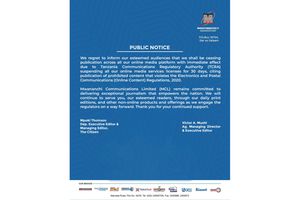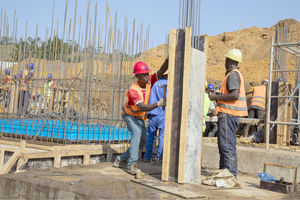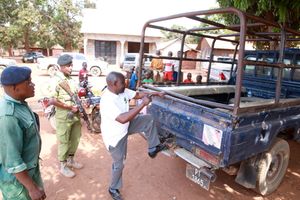‘Makinikia’ and economic liberation: The untold story – 4

What you need to know:
- By 1994 the project that was expected to bring in much needed foreign currency was failing
Last week we examined a series of programmes of making the mining industry an engine for economic growth.
As we continue to unearth the origins of the Makinikia Epic we will examine the continuing various attempts to make the mining industry bear fruits as programmes and projects designed and implemented by the Government unfolded.
One specific programme that was considered a quick win was designed and implemented with the noble intention of earning foreign currency from gold exports in order to improve the country’s Balance of Payment.
This was a Gold Buying Programme initiated in 1990 through the Bank of Tanzania (BoT) to buy gold from Artisanal and Small Scale Miners (ASM) across the country.
The programme established Gold Buying Centres. It started with the establishment of two centres - that is Mwanza Centre and Mpanda Centre and then later more centres were established in Chunya, Mbeya, Geita, Musoma and several other gold producing areas in which the National Bank of Commerce (NBC) was to be involved to organise finances and take custody of the gold on behalf of the BoT before the gold was transferred to the BoT in Dar es Salaam for purification and export.
By 1994 the project that was anticipated to bring the much needed foreign currency was failing due to mainly questionable integrity of the Mining Technicians who were entrusted by the Government to buy the gold from ASMs.
Often, some technicians colluded with the sellers (ASM) buying impure gold including gold mixed with the minerals pyrite known as fuss-gold. When the gold was smelted for sale it turned out to be of very low quality – un-equivalent to the reported purchase price from the centres.
The BoT ended up losing a substantive amount of money and the gold buying activity was then stopped after five years of operation.
The gold buying project was yet another failed endeavour to make the mining industry tick and the Second Phase Government was once again pushed to innovate to further the war on economic domination. In other words the dynamics of the mining industry in a globalised world was still the main challenging whack to sort out to attain the true economic emancipation.
Enticed by the fact that the world became one global village, Tanzania and other developing nations by this time had no option but to embrace privatisation of their economic activities and under the World Bank and the International Monetary Fund (IMF), funds were made available to review the economic activities including the extractive sector (mining, oil and gas) to align it to the new invading globalised free market economic system.
The free market economic system demanded that bringing foreign direct investment (FDI) to Tanzania would finance large scale mining projects.
In this regard, in 1995 the Second Phase Government began to solicit assistance from the World Bank and the IMF for support in mining investments.
This endeavour was adopted and carried further by the Third Phase Government in conceiving and implementing a Tanzania Mineral Sector Development Technical Assistance Project (MSD – TA) with the principal objective of supporting Tanzania’s private sector-oriented mining development.
The project assisted Tanzania to design free market oriented mining policies, laws, regulations; fiscal and environmental frameworks that would promote and guide and expand private investment in mining.
In other words, the MD-TA project was designed and implemented to develop a feasible mining policy, mining code and a mining fiscal regime.
This project enabled the Government to create a Mineral Policy of Tanzania of 1997, a Mining Act of 1998 and Mining Regulations of 2000.
The tax package accompanying these policies and statutes was streamlined to enable investors to recover exploration and development costs and achieve a rate of return that covered the risks.





